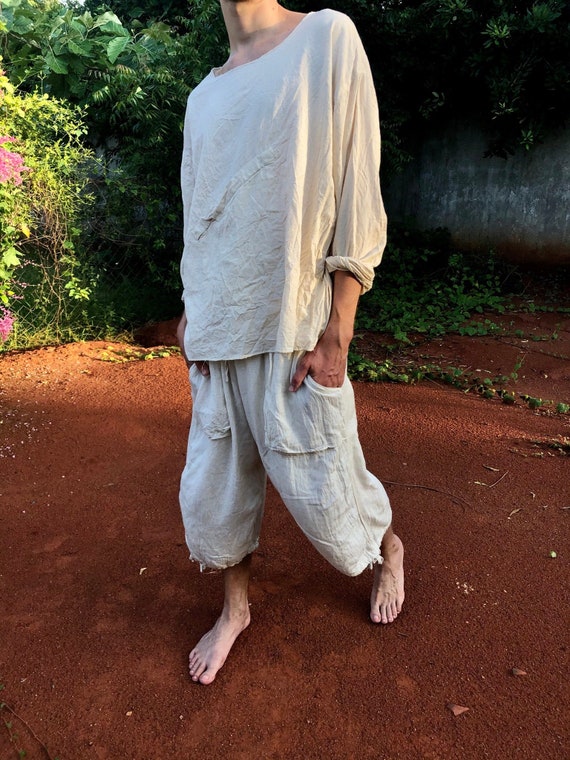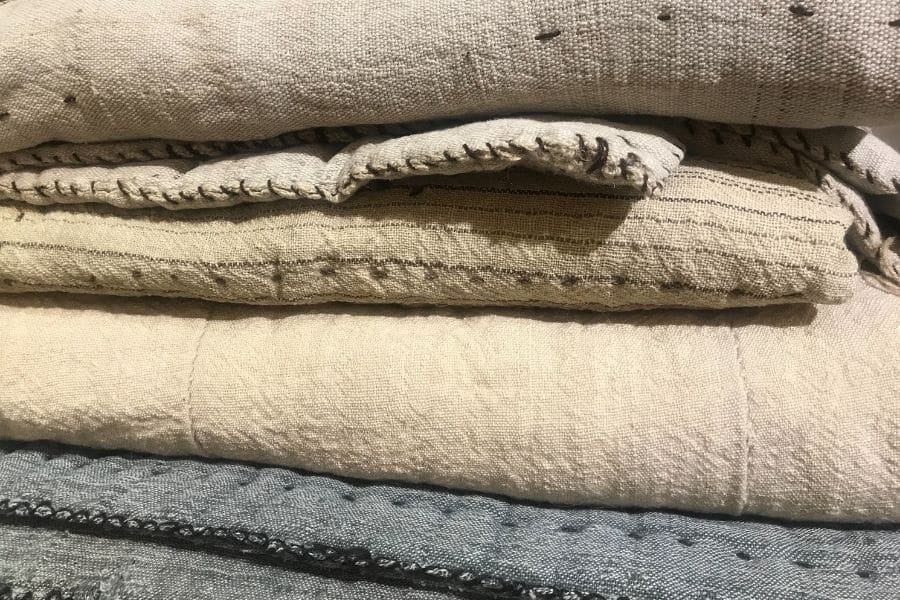Top Reasons To Choosing Bamboo Clothing
Wiki Article
What Does Hemp Compare With Cotton In Terms Of Water Use, Pesticides/Herbicides?
There are many reasons why hemp is considered to be a more sustainable plant as compared to cotton when it comes to the use of water as well as pesticides and herbicides.
Hemp - Hemp's water needs are minimal compared to other crops such as cotton. It's a drought resistant plant that grows with minimal water. In some areas, hemp can be grown with rainwater only. This is why it is a good water choice.
Cotton- Conventional cotton is notorious for its high water consumption. The cotton farming process is usually heavily irrigated, which can reduce the water resources of the area and lead to water shortages. The cultivation of cotton is highly water-intensive, which has led to concerns regarding its sustainability.
Herbicides are pesticides.
Hemp- Hemp naturally fights off diseases and pests, which means it's less likely to need chemical herbicides or pesticides. The chemical use in hemp is less than other crops like cotton. The hemp cultivation process organically is pesticide-free.
Cotton- Conventional cotton farming generally relies heavily on herbicides and pesticides that are synthetic to control weeds and pests. These chemicals may cause negative environmental consequences, such as soil and water pollution and harm to species that are not targeted as well as the development of pesticide-resistant bugs.
Summary: hemp is considered to be a more eco sustainable crop than cotton when it comes to water consumption, pesticides, herbicides.
Hemp typically requires less water, and it can be grown without irrigation or rainwater.
Hemp's natural resistance to pests reduces the need to apply synthetic pesticides.
Hemp is generally grown with less herbicides and pesticides than traditional cotton.
Nevertheless, it is important to recognize that eco-friendly and sustainable methods may differ among cultivators and in different regions. Organic farming techniques further increase the sustainableness of hemp and cotton since they limit the use of synthetic chemicals and improve the health of the soil. Concerning the environmental impact on clothing and textiles, using organic and sustainably made fabrics can help lessen the ecological footprint. Follow the recommended koraoutdoor.com outdoor clothing for blog tips including hemp textiles, t shirt hemp, womens hemp clothing, hemp textiles, hemp jacket, hemp hoodie, hemp fleece fabric, hemp athletic wear, hemp t shirts wholesale, hemp button down shirt and more.

What Makes Hemp Clothing Superior In Terms Of Function And Design Than Traditional Fibres.
Hemp clothing has a number of technical and functional benefits over traditional textiles. It's also eco green. Here are some ways that hemp clothing stands apart as an eco-friendly and high-performance choice that can help with moisture wicking and breathability.
Hemp fibers draw moisture away from your body, keeping you cool and dry in hot weather. They help to wick away water, which keeps the wearer cool and dry in the heat of summer.
Temperature Regulation-
Clothing made from hemp has excellent thermoregulatory abilities. It keeps you warm in cool weather by trapping heat near to your body. It can also help keep you cool during hot temperatures by allowing heat and water to go away. The natural regulation of temperature can reduce the need to frequently change clothes.
Durability and longevity-
Hemp is known for its durability. Hemp clothing tends to be more robust and resistant to wear and tear as compared to other traditional fibers such as cotton. Hemp garments are durable, meaning they can last longer and reduce the need for replacements, and, consequently, their impact on the environment.
UV Protection
Hemp fibers are a great UV protectant, shielding the skin from harmful UV radiation. This is a feature that can be particularly beneficial for outdoor activities.
Biodegradability:
Hemp clothing breaks down as time passes. This feature helps in reducing the environmental impact of textile garbage. Synthetic fibers are able to be buried for lengthy time.
Low Environmental Impact
Hemp production typically uses less synthetic pesticides or herbicides in comparison to cotton. Hemp also uses less water which makes it a green alternative. The ecological benefits of hemp grown organically are even more pronounced.
Carbon Sequestration
Hemp can be used to absorb CO2 from the atmospheric air. The cultivation of hemp works as a carbon sink and helps to reduce the levels of greenhouse gases.
Sustainability and Crop rotation
Hemp can be included in rotations of crops to improve soil health, reduce the risk of disease and soil depletion. The hemp's environmental impact is enhanced by this sustainable farming technique.
Versatility:
Hemp fibers are a versatile material that can be blended with organic cotton recycled polyester, or other materials to create sustainable fabrics. This versatility allows for the creation of novel and sustainable textiles.
Low Toxicity
Hemp fibers are naturally low in toxicity. They do not require extensive chemical processing during manufacturing, thus reducing the environmental impact of textile production.
It's crucial to keep in mind that even though hemp offers a myriad of benefits for the environment and is functional, the overall sustainability of clothing also depends on other factors such as dyeing processes as well as transportation and ethical working practices. Consumers who want to live a greener lifestyle should select clothing brands that make use of hemp and other sustainable fibres and prioritize transparency and ethical manufacturing practices. View the recommended my response on hemp clothes for website info including hemp sweater, hemp sweatpants, hemp trousers, hemp clothing wholesale, hemp coat, hemp yoga clothes, hemp sweater, hemp garments, hemp fleece fabric, patagonia hemp jacket and more.

What are differences between hemp and Bamboo fibers?
Two different fibers, hemp and bamboo can be used in the production of textiles. Each has its own characteristics and distinctive characteristic. Here are the major distinctions between hemp and bamboo fibers. Plant Source-
Hemp fibers come from the bast fibers that are located in the stalks. Hemp has been used for many purposes over through the ages. It is a fast-growing multi-purpose plant.
Bamboo fibers are produced from bamboo pulp. Bamboo is grass that is fast growing and is well-known for its durability.
2. Fiber Characteristics
Hemp Fibers- Hemp fibers have a reputation for strength and durability. They're among the strongest fibers in nature and become softer every time they're washed, so they're great for creating textiles.
Bamboo bamboo is a soft, silky fiber. They may be less dense and less robust than hemp, but are loved for their softness and comfort.
3. Texture The texture, feel and look
Hemp Fabric Hemp is a material that has a texture and rougher feel in its initial state. It's soft, but its texture is distinct from bamboo.
Bamboo- Bamboo fabric feels soft, silky and luxuriously soft. It is often described by those who wear it as feeling like a mix of silk and cotton.
4. Breathability (and moisture-wicking)-
Hemp- Hemp fibers are naturally air-tight and moisture-wicking, which allows air circulation and moisture absorption. They can help keep your body dry and cool in hot conditions.
Bamboo Fibers- Bamboo fibres possess an excellent amount of breathability as well as moisture wicking. Micro-gaps in the fabric enhance the fabric's ability to regulate moisture and temperature which allows you to remain comfortable under varying conditions.
5. Environmental Impact-
Hemp Hemp is an eco-friendly fiber because due to its rapid increase in growth, its low need for water and resistance against pests. These elements help reduce the need for herbicides or pesticides. Hemp can also absorb carbon dioxide from the atmosphere when it is growing.
Bamboo is a popular choice for environmentally friendly building materials. It is fast-growing and requires very little water and is able to be grown without pesticides or herbicides. Some bamboos are regarded as sustainable, such as Moso bamboo.
6. Processing-
Hemp- Hemp fibres need intensive processing to separate out the out the bast fibers on the outside and the woody core inside. Processing can include retting and decortication as well as mechanical separation.
Bamboo- Bamboo Fibers are produced through a chemical process known as the viscose/rayon process. This involves breaking down the bamboo pulp using chemicals. This can be damaging for the environment if not properly handled. However, some bamboo fabrics use closed-loop systems that minimize the waste of chemicals.
7. Versatility-
Hemp Fibers- Hemp fibers have a variety of applications, including clothing, textiles, paper, and building materials.
Bamboo Fibers The bamboo fibers are utilized in textiles, clothing and other products.
Summary The two types of bamboo provide unique advantages and are sustainable. It is dependent on the qualities you are looking for in a product, and how environmentally conscious you are. Check out the top rated cool training about bamboo clothing for more tips including bamboo clothing wholesale, checkered bamboo pajamas, bamboo brand jeans, short bamboo, bamboo long sleeve shirt, bamboo yoga clothing, bamboo tee shirts wholesale, shakuhachi clothes, short sleeve bamboo pajamas, carter's bamboo pajamas and more.
